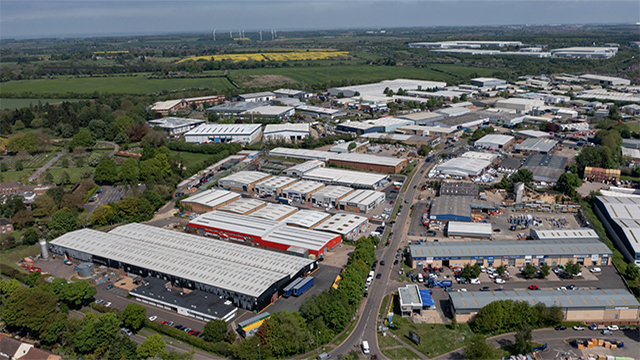Why retirement is on the property industry’s radar
The mega trends of urbanisation, demographics and technology are pushing retirement living further on to the real estate industry’s radar.
The retirement and assisted living sector was ranked second only to logistics in European investors’ assessment of the leading investment opportunities in 2018, according to Europe ULI and PwC’s 2018 Emerging Trends in Real Estate report.
Europe’s population is ageing, yet bespoke housing for the elderly is undersupplied, particularly in the UK. Robotics and artificial intelligence are also impacting the sector, allowing residents to access additional services and also helping operators to monitor, understand and manage their assets.
The mega trends of urbanisation, demographics and technology are pushing retirement living further on to the real estate industry’s radar.
The retirement and assisted living sector was ranked second only to logistics in European investors’ assessment of the leading investment opportunities in 2018, according to Europe ULI and PwC’s 2018 Emerging Trends in Real Estate report.
Europe’s population is ageing, yet bespoke housing for the elderly is undersupplied, particularly in the UK. Robotics and artificial intelligence are also impacting the sector, allowing residents to access additional services and also helping operators to monitor, understand and manage their assets.
And in London, new infrastructure offers greater connectivity across swathes of the capital, an important consideration given that amenity-rich locations with good transport links are high on the wish list of those looking for retirement accommodation.
Some land-intensive retirement living models are difficult to apply in a London context; for example, large self-contained campuses or continuing care retirement communities.
These typically feature 100-plus homes offering assisted living through to nursing homes, as well as a range of amenities and levels of care and on-site support.
However, there are a number of retirement concepts that are well placed to succeed in locations with strong competition for land – such as London – or that take advantage of a city’s excellent existing amenities, services and community to create a compelling proposition.
Vertical villages
Developments such as LifeCare Residences’ Battersea Place, SW11, and Audley Care’s new development in Clapham Common, SW4, are examples of this.
Apache Capital Partners and Audley Group will begin construction this year on a 13,750 sq m luxury retirement scheme on Nightingale Lane, overlooking Clapham Common, with completion expected in 2020.
It will offer luxury, purpose-built accommodation for the elderly with the ability to provide a care and hospitality service including restaurant, lounge, pool/spa with excellent transport links and a wide variety of shops and amenities nearby.
Education-based
Homes situated in a “learning and research community” that allow older residents to live alongside younger academic colleagues would seem a natural fit with London’s world-class universities and institutions.
This model is untrialled in the UK but would be popular – our research found a quarter of people who were introduced to the idea were interested.
In Lasell Village, Massachusetts, residents take 450 hours of education each year at the nearby Lasell College.
In addition, 40 students are employed in the village to help pay for their tuition fees and to learn about dementia and geriatric medicine. Despite scepticism over the model, it achieved full occupancy within four months of opening.
Residential and Care Center Humanitas, a long-term care facility in the riverside town of Deventer in the Netherlands, gives six students free accommodation in exchange for 30 hours of volunteer work per month, helping residents and teaching them new skills.
Since opening in 2012 the intergenerational living model has gained popularity, with two further homes opening in the Netherlands and one in France.
Spoke and hub communities
Meeting the challenge of overcoming loneliness and isolation in old age, co-living spaces take a variety of forms.
Combining private space with communal living areas, spoke and hub communities can be seen as similar to purpose-built student accommodation for the young.
To date, the closest delivery has been created by OWCH, a group of women over 50 who have created their own community in a new purpose-built block of flats in Barnet, north London.
This features green space, private apartments and communal kitchens to encourage social networks.
Senior co-housing
Untried in the UK, senior co-housing sees retirement housing co-located with general use community facilities such as schools, libraries, children’s centres or learning environments.
These can even co-locate with employers or training sites, helping older people to stay in work for longer.
Humanitas Bergweg is a good example: its large block of supported housing and dementia care in Rotterdam in the Netherlands has a central atrium with a bar, space for clubs, library, restaurant and internet café.
Micro-living
Again untried in the UK, micro mansions for retirees would meet a market need for affordable space for those who do not qualify for social housing.
With some properties measuring 250 to 300 sq ft, they could currently only be delivered through permitted development rights due to the minimum space requirements attached to new-build schemes.
Nevertheless, micro-living is attracting interest outside of the retirement sector: L&G has started production on 26 sq m modular homes, some of which have been bought by affordable housing provider RHP in Richmond, TW11.
Meanwhile, U+I has already created two test apartments in its offices in Victoria, SW1, that it hopes to roll out for renters in central London.
Richard Harris, head of alternative capital markets, BNP Paribas Real Estate










